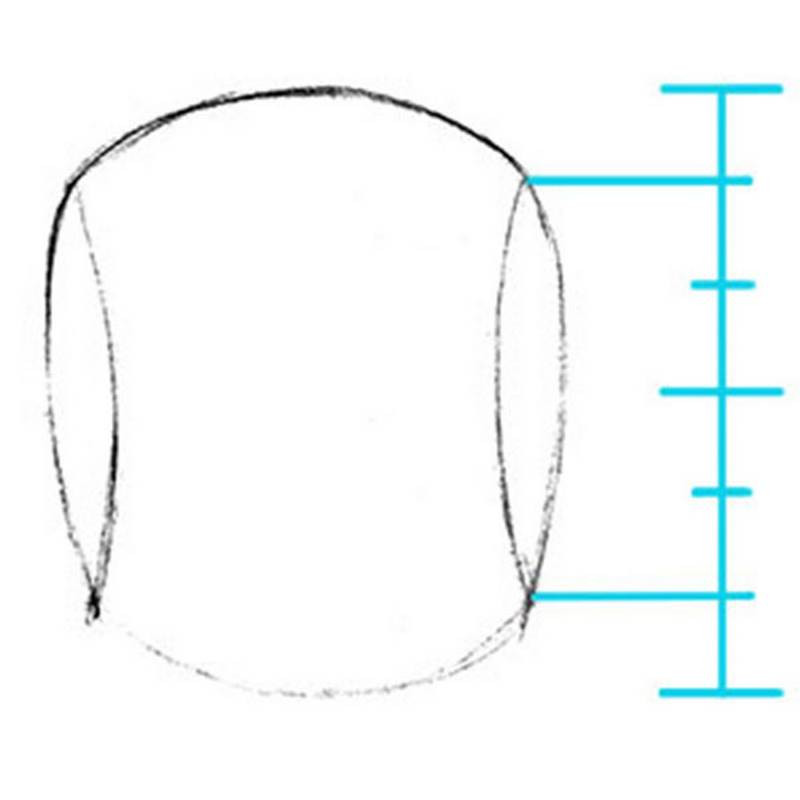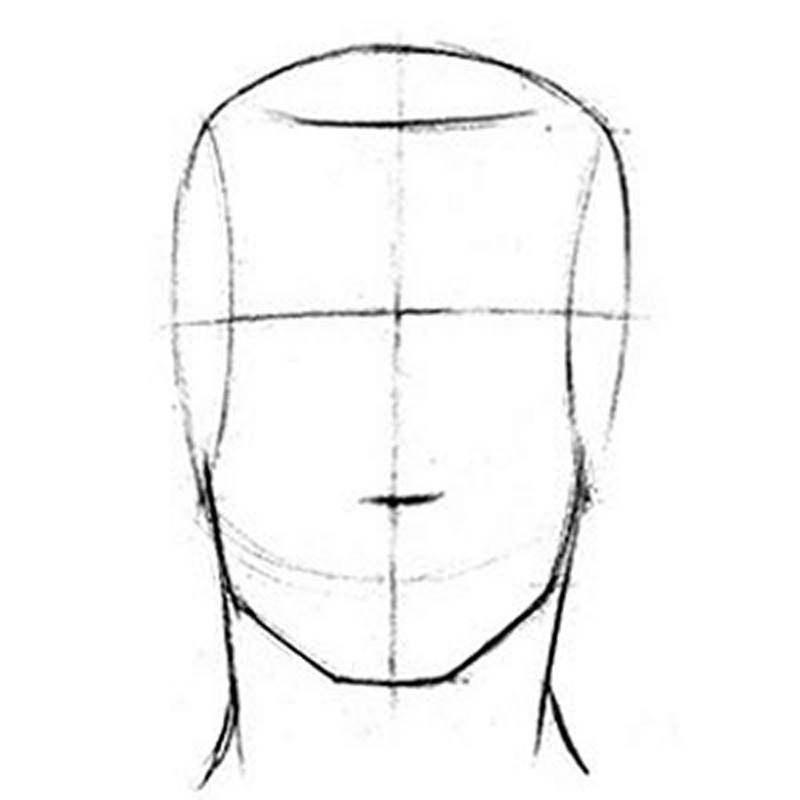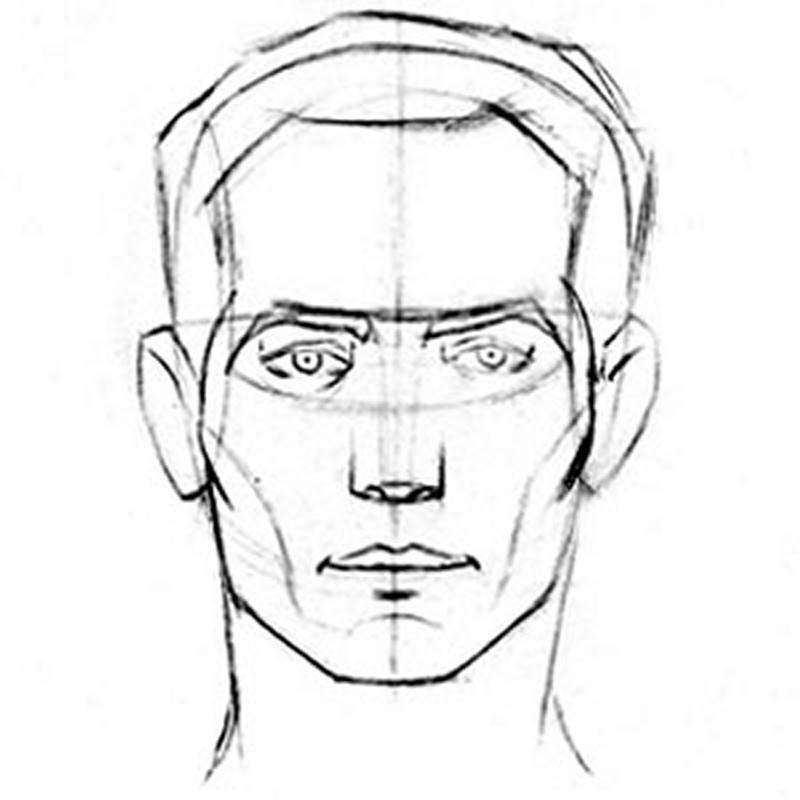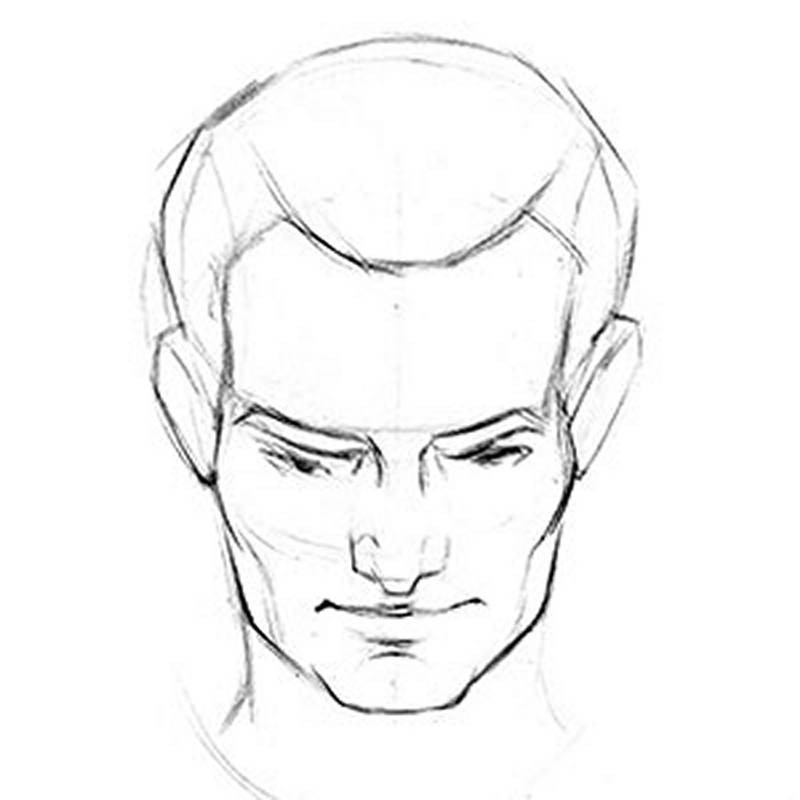Portrait Drawing Fundamentals
Check out the Premium Portrait course to support the lessons and get access to every portrait video.
Drawing the Head - Front View
The Loomis method shows its true power in a more dynamic angle like the ¾, which I demonstrated in the previous lesson, but it still works on flat angles like the front and profile.
I’ll start with that circle for the cranium, and chop off the sides. Remember, the height of the side plane should be ⅔ of the circle. You can see a very thin piece of each side plane, since the front of the head is thinner than the side.
Now let’s determine whether the person is looking up, down, or straight ahead. A good way to do this is by looking at the distance from ear to brow.


If the ear is below the brow, then the person is looking up and the brow line will be above the center of the circle. And the opposite if the ears are above the brow. If they are at the same level, then the person is looking straight ahead and the brow will be in the middle of the circle.
Earlier we established the side plane as ⅔ of the circle. This is important because half of that side plane is ⅓ of the face. So, we can take that distance and drop it from the brow to find the bottom of the nose. And again to find the bottom of the chin. Bring it up from the brow to the hairline.
Then attach the jaw to the cranium. The sides of the jaw usually get thinner at the bottom. Establish the width of the chin and complete the jaw. Add the centerline and the neck – the front view is the only angle when the center line is actually in the center of the head shape. Usually it will be farther in the direction the person is looking. The ears sit in the middle third and usually end at the outside of the original circle.


Before we add the thirds, let’s take a little side trip and explore foreshortening.

"Foreshortening occurs when an object appears compressed when seen from a particular viewpoint, and the effect of perspective causes distortion."
This can easily be seen when looking at a flat surface, like a book. When looking directly at the book, we see its full length. But, if we move to a different angle, perspective distorts its length. As things go further away from us, they appear smaller.
See that? That’s foreshortening.
Applying this concept to the face, means that our "perfect thirds" will now be distorted. The third closest to us (in this case the forehead) will be just about the same as half of the side plane. And the other two thirds will get progressively smaller.
Attach the jaw, neck and centerline. The ears are very important in this case because they help to show the downtilt. Always put them in the bottom half of the oval.
And of course, the features.

Now let’s learn how to draw the side view!

















